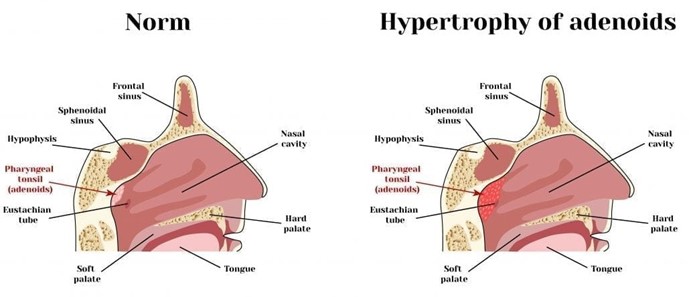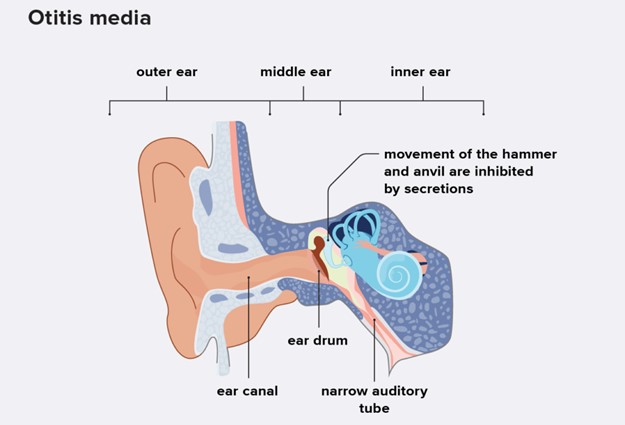Which factor is most important in predisposing toddlers to frequent infections such as otitis media, tonsillitis, and upper respiratory tract infections?
Respirations are abdominal
Pulse and respiratory rates are slower than those in infancy
Defense mechanisms are less efficient than those during infancy
The presence of short, straight internal ear/throat structures and large tonsil/adenoid lymph tissue
The Correct Answer is D

This is because toddlers continue to have the short, straight internal ear canal of infants.
The lymphoid tissue of the tonsils and adenoids continues to be relatively large. These two anatomic conditions combine to predispose the toddler to frequent infections.
Choice A is wrong because respirations are abdominal. This does not affect the susceptibility to infection.
Choice B is wrong because pulse and respiratory rates are slower than those in infancy. This also does not affect the susceptibility to infection.
Choice C is wrong because defense mechanisms are less efficient than those during
infancy. This is not true, as the defense mechanisms are more efficient compared with those of infancy.
Nursing Test Bank
Naxlex Comprehensive Predictor Exams
Related Questions
Correct Answer is D
Explanation
Chronic otitis media with effusion (OME) is a condition where fluid accumulates in the middle ear without signs of infection.

This can cause hearing loss, speech delay, and balance problems. The child may complain of a feeling of fullness or pressure in the ear.
Choice A is wrong because a fever as high as 40° C (104° F) is a sign of acute otitis media, which is an infection of the middle ear with inflammation and pus formation.
Choice B is wrong because severe pain in the ear is also a sign of acute otitis media, not chronic otitis media with effusion.
Choice C is wrong because nausea and vomiting are not typical symptoms of chronic otitis media with effusion. They may be associated with other conditions such as gastroenteritis or vestibular disorders.
Correct Answer is A
Explanation
“You may need to increase the caloric density of your infant’s formula.” This is because infants with heart failure have increased metabolic needs and may not be able to consume enough volume to meet their nutritional requirements. Increasing the caloric density of the formula can help them achieve adequate growth and development without overloading their heart.
Choice B is wrong because feeding the baby every 2 hours may cause fatigue and dehydration. Infants with heart failure should be fed every 3 to 4 hours or on demand.
Choice C is wrong because increasing the amount of formula may cause fluid retention and worsen heart failure. Infants with heart failure should be fed small, frequent amounts of formula.
Choice D is wrong because placing a nasal oxygen cannula on the infant during and after each feeding may not be necessary or beneficial. Oxygen therapy should be prescribed by a physician based on the infant’s oxygen saturation levels and clinical signs of hypoxia.
Whether you are a student looking to ace your exams or a practicing nurse seeking to enhance your expertise , our nursing education contents will empower you with the confidence and competence to make a difference in the lives of patients and become a respected leader in the healthcare field.
Visit Naxlex, invest in your future and unlock endless possibilities with our unparalleled nursing education contents today
Report Wrong Answer on the Current Question
Do you disagree with the answer? If yes, what is your expected answer? Explain.
Kindly be descriptive with the issue you are facing.
